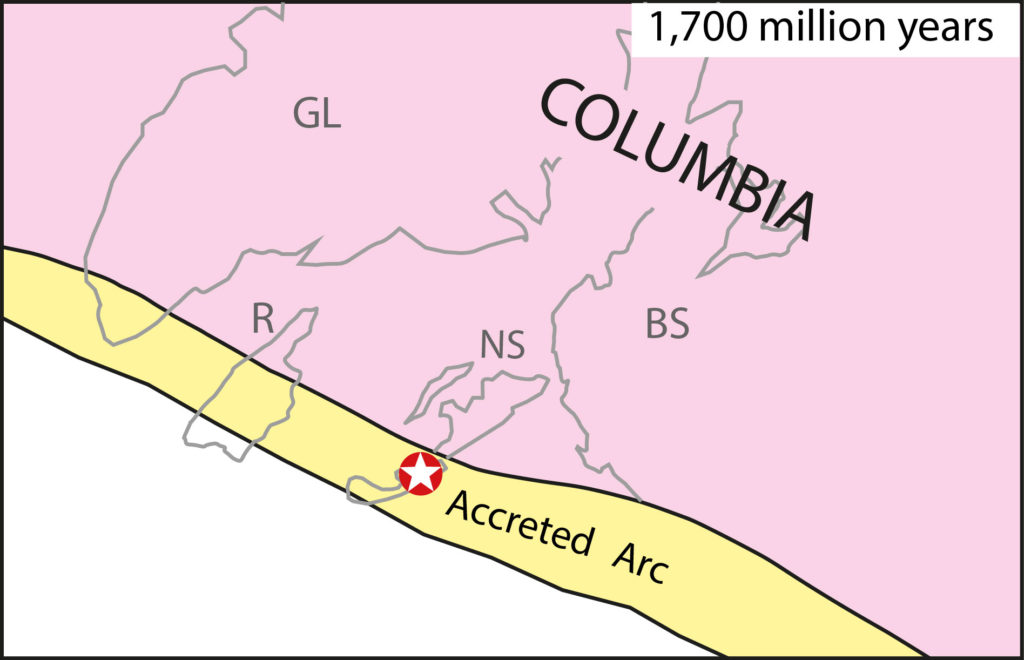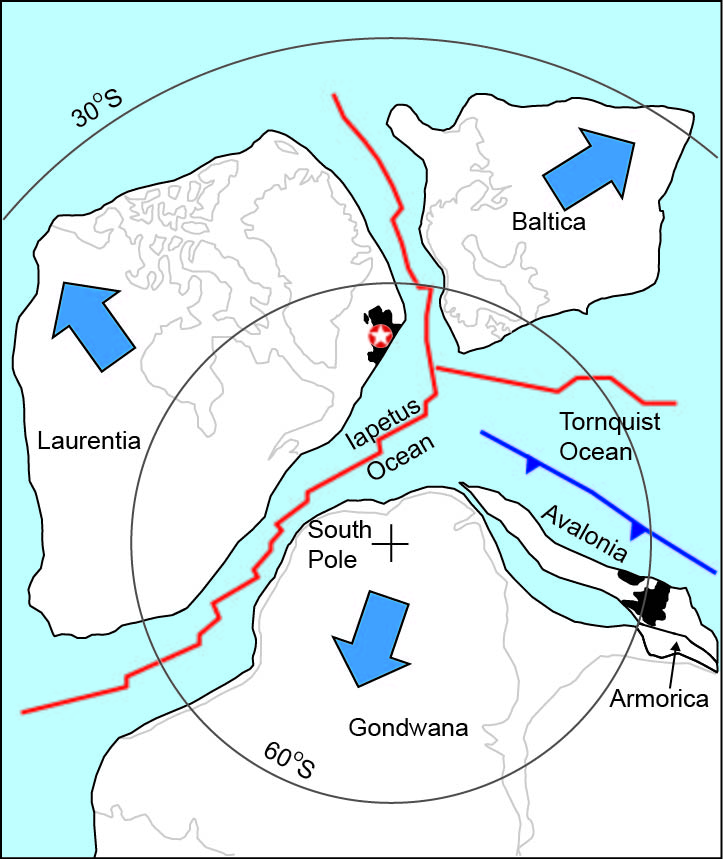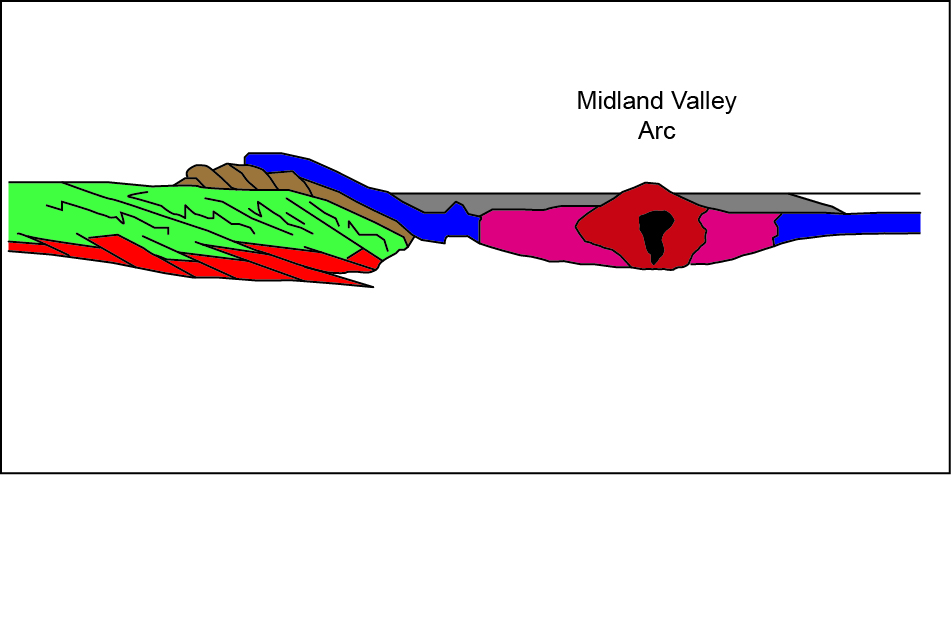The Earth formed around 4,500 million years ago (Ma) and none of the rocks formed during the first half of Earth history have survived on Islay. However, crust that formed around 1,800 Ma makes up much of the Rhinns, and the Islay area was part of a very early supercontinent, known as Columbia.

There a big gap of about 1,000 Ma but from 800 to 600 Ma the rocks known as the Dalradian, which underlie most of Islay, were deposited. During this time Islay was part of the Rodinia supercontinent.

Rodinia was progressively broken up (rifted) to form smaller continents separated by oceans. The opening and closing of one of these oceans, Iapetus, is well illustrated by the rocks of Islay. The first Dalradian rocks filled faulted basins (the Colonsay and Bowmore Groups), then the Appin and Argyll Groups rocks were deposited as continental shelf sediments, first in a marine gulf and then in an open ocean.
The Argyll Group includes glacial deposits (the world-famous Port Askaig Tillite), formed during a global glaciation which some refer to as ‘Snowball Earth’, and also some microbial carbonate rocks (stromatolites) deposited in warm tropical seas which provide excellent evidence of early life on Earth and of rapid climate changes. The Group also includes volcanic rocks that mark the opening of the new ocean.
Around 470 Ma, this ocean closed and the Dalradian rocks were compressed as a volcanic arc collided into them. They were buried to depths of 20-30 km and deformed and metamorphosed in this mountain-building event known as the Caledonian Orogeny. Islay is unusual in that the degree of metamorphism was less intense than other parts of Scotland and most of the original features of the rocks have been preserved.

These mountains were largely eroded away by 430 Ma and there were several phases of faulting and igneous activity over the next 200 Ma, but most of the sediments deposited during this time were in basins offshore around Islay.
As North America broke away from Eurasia, another new ocean, the North Atlantic, was formed. Enormous vertical sheets of frozen magma, called dykes, seen best on the northern shore of Islay, were a precursor to the birth of this modern day ocean about 55 Ma.
The Ice Age is a much more recent phenomenon, it began some 2 Million years ago and the final melting of the giant ice sheets began about 20,000 years ago. There are many interesting geomorphological features and glacial deposits on Islay from this period.
